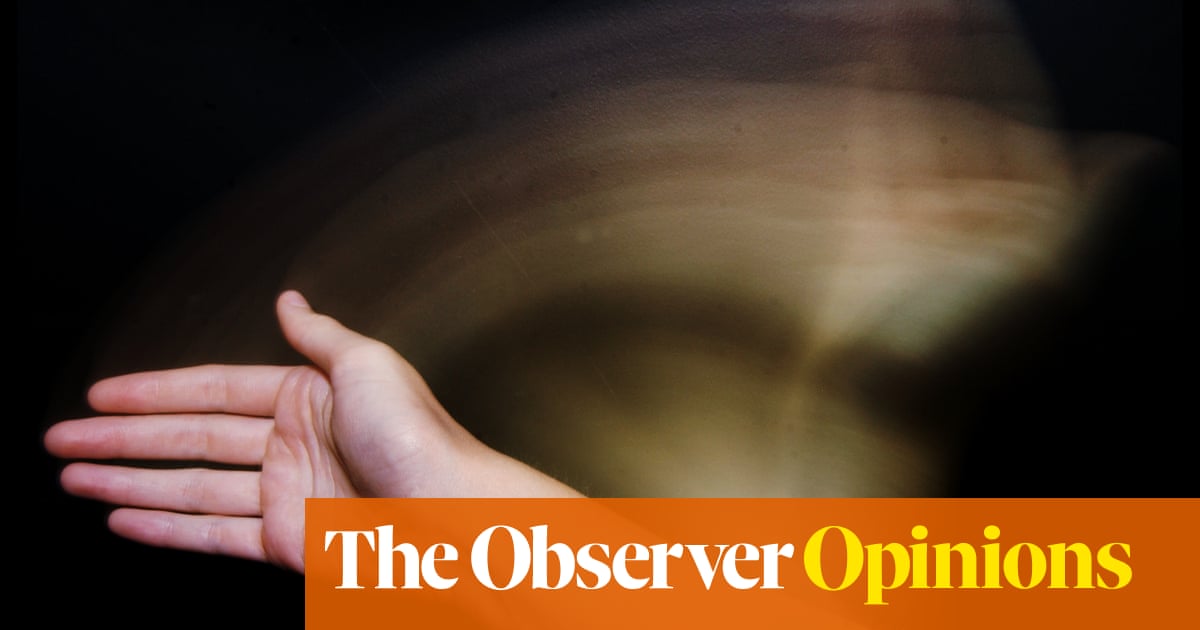
Amid the rubble of bombed homes in Binnish, a town in north-west Syria, a brightly painted mural stands out. The image shows an intact house, with love hearts streaming from the windows. Overhead, however, the dark silhouettes of birds are accompanied by helicopters, warplanes and missiles, and the garden’s red and yellow flowers look like flames.
The mural is the work of 13-year-old Hussein Sabbagh, who was eight when his family fled Bashar al-Assad’s attacks on Aleppo in 2016. Like millions of other Syrians, the Sabbaghs ended up in north-west Syria, the last pocket of the country that remains outside the regime’s control.
The family tried to build a new life despite the fact that war still raged around them: for Hussein, there was respite in football, and helping the local artist Aziz al-Asmar with his famous political murals. But the teenager’s dreams of being a painter ended last month when regime forces targeted a swimming pool in the town of Fua with artillery shelling. Hussein, along with his 17-year-old brother, 23-year-old uncle, and three more civilians, was killed.
“Hussein was loved by everyone. He helped me in many of the murals I painted … He was talented and had such a beautiful imagination,” said Asmar. “There was one particular drawing that he loved to paint a lot, a house with love hearts … He wanted to say that these bombs kill love and destroy homes.”
Hussein is one of 27 children who have been killed in government attacks across north-west Syria in the past two months alone as Bashar al-Assad’s war of attrition takes its toll on the area’s youngest and most vulnerable residents. Seven school buildings have also been hit, adding to the regime’s ugly track record of targeting civilian infrastructure.
“We have begun to notice a pattern in recent years, where the bombing gets worse on holidays like Eid,” said Laila Hasso, the director of communication and advocacy for the locally run Hurras Network, a charity that works to protect children in Syria.
“Thirteen children were killed in just three days. Now every time Eid comes we are afraid we will lose more children. Instead of giving them new clothes to dress up and celebrate, parents are dressing up their children to be buried.”
North-west Syria is mostly ruled by Hayat Tahrir al-Sham, or HTS, an Islamist group that seized control from other opposition factions in 2019. While HTS has made efforts to distance itself from its al-Qaida origins, the group tolerates little dissent and enforces religious edicts on those living in its territory.
The area is supposedly protected by a ceasefire brokered by Turkey and Russia in March 2020, but the deal is routinely ignored and the area’s residents live in fear of the next wave of airstrikes.
About three-quarters of the estimated population of 3.5 million fled to the north-west to escape fighting in other parts of the country. Living conditions are dire and have worsened since last year’s collapse of the Syrian currency, which sent food prices soaring.
A steady stream of aid cuts and the arrival of Covid-19 have also added to the hardships of daily life for people trapped between the regime and HTS.
The violence has escalated in the two weeks since the Eid al-Adha holiday began. Around the same time, Assad took the oath of office for a fourth seven-year term as president after winning 95% of the vote in May’s fraudulent election, vowing to make “liberating those parts of the homeland that still need to be” one of his top priorities.
“The regime calls the people in north-west Syria terrorists. But the acts of terrorism is what the regime does, attacking civilians and schools,” said Hasso.
“Sometimes parents ask us to close the school buildings because they are so afraid that their children will die there. In other parts of the world, schools are regarded as safe places … The regime wants to send the message that there is no future in this area for you or your children.”
Asmar, the artist, went to leave flowers at Hussein’s grave in Binnish last week. Despite the pain of losing his young assistant, painting remains a way to hold on to hope and remind the world that Syrians still dream of peace and justice, he said.
“Since I came back to Syria from Beirut years ago, I seek to draw a smile on children’s faces. I try to make them forget, even for a moment, the terror and war they’ve lived through,” he said.
“I let them participate with me so that they are able to express their feelings through art. I want to deliver a message to them that hope still exists.”












